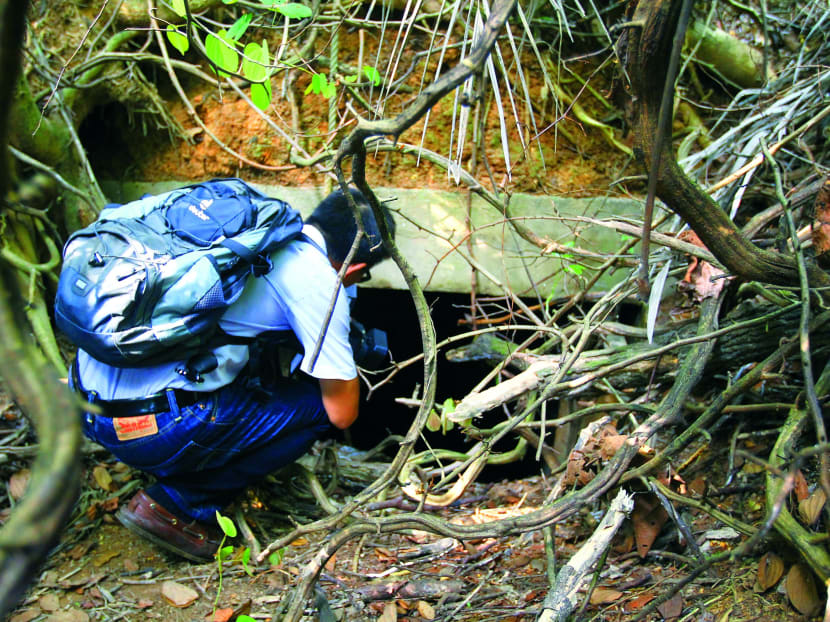NHB launches tour of abandoned war site in Marsiling
SINGAPORE — With no walking tracks in sight, the dense Marsiling jungle is one area many city slickers would probably give a miss.

The quiet forest of Marsiling houses a little-known series of tunnels that were once used by the British Royal Air Force and later, by the Japanese during World War II. This is the entrance to one of the tunnels, Feb 6, 2014. Photo: Ernest Chua
SINGAPORE — With no walking tracks in sight, the dense Marsiling jungle is one area many city slickers would probably give a miss.
But amid all the thick vegetation lies an abandoned war site that was once used as a fuel depot by the British Royal Air Force, and later the Imperial Japanese Army for their aviation fleets during World War II.
To commemorate the 72nd anniversary of the Battle of Singapore this year, the National Heritage Board (NHB) has launched the guided Marsiling Tunnels Tour covering the site, which has several sealed tunnels.
Those who join the tour assemble at Kranji MRT Station and are taken by bus to the jungle. They then trek a 100m to the site.
Although the site has several tunnels, tour participants will not able to explore them since they have been sealed.
The NHB said the tunnels were last seen open in 2008. It is not known who sealed the tunnels.
When asked if the board is planning to unseal the tunnels for future use, NHB Group Director for Policy Alvin Tan said: “The NHB is presently embarking on a fact-finding exercise, and will explore the possibility of opening the tunnels with the relevant agency (or) agencies, subject to an assessment of the tunnels’ structural integrity and other safety considerations.”
Based on wartime intelligence reports and declassified documents obtained from the United Kingdom’s national archives, NHB researchers found that the Marsiling site, despite its close proximity to a British naval base, was used as a fuel reserve facility for the Royal Air Force and not for the Royal Navy.
During the Japanese Occupation of Singapore in the early 1940s, the Imperial Army modified the facility and included five tanks to store fuel.
While most war structures built by the Japanese were destroyed after they surrendered in 1945, the facility at the site is still intact because of its remote and isolated location, said Mr Tan.
Apart from the Marsiling Tunnels Tour, four other tours will be available to the public between Feb 8 and 15. They include a visit to the Tiong Bahru Air Raid Shelter and a night tour at Opium Hill, where a battle between the Malay Regiment and Japanese soldiers raged. All the tours are free of charge.
For more information on the Battle of Singapore Tours and registration details, visit www.nhb.gov.sg and www.museums.com.sg.






